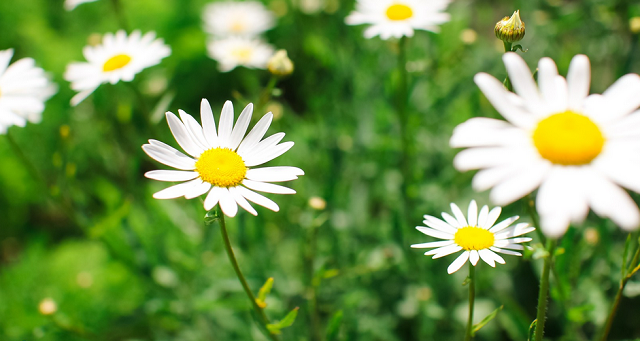
Helping to get your kids excited about organic gardening is a part of what our Foundation hopes to accomplish. It teaches them about the interconnectedness between the earth and the health of our communities, the seed-to-table concept, and instills a sense of pride in knowing that they have created something from the ground-up. And we cannot forget the most important part – it’s fun!
Gardening can be one of the most rewarding activities for children, which is why it is important for them to see a clear path between the “task” and the end-result, beyond the harvest. While great-tasting fruits and vegetables are rewards they can immediately identify with, it helps your kids further to communicate the nutritious benefits. They may know all about the vitamins and minerals packed into berries, carrots, peas and other easy-to-grow seeds for the home garden but what about the health benefits of herbs? This is one area that is often neglected when it comes to gardening tips for kids. Whether you and your children/students are planting a garden at home or school the following herbs will serve as a great addition.
Three Healthy & Helpful Herbs that Your Kids can Grow in Their Own Garden
1. German Chamomile
Why kids love this herb – German chamomile is one of the most highly recommended herbs for a child’s garden. Children love when they blossom, as the patches produce small white flowers with large yellow centers and a scent reminiscent of apples. Its taste, when used to make herbal tea, is sweet (and only mildly bitter) and is absolutely safe for children of all-ages to consume (unless they have an allergy to coneflowers).
Reported health benefits – Chamomile, when added to tea, may prevent your child’s upset stomach by stimulating their digestive system to increase stomach acid and pancreatic secretions. If your child suffers from excessive gas or indigestion, chamomile (proudly grown in their very own garden!) is worth trying. This herb is also know for its anti-inflammatory properties, which can be applied as a “home-remedy” for when your child has a mild or moderate fever. When approved by your family physician or naturopathic doctor, many experts also recommend using chamomile to help treat infantile colic.
Growing chamomile – Chamomile loves the light. If growing them outdoors pick a spot with significant sun exposure. If growing them indoors in a container (a 12-inch pot is optimal) be sure to keep them near the window with the most natural light. Spread the seeds approximately 15 inches apart in soil when planting. Outdoor-grown chamomile will thrive under spring/summer climates with moderate rainfall without the need for additional watering while indoor containers require watering about once per week. Because chamomile seeds itself, all that you need to do to maintain a long living patch of this helpful herb is to allow some of its blossoms to seed the soil, picking only what you need for the season. Within a month of planting the flowers will bloom, and it is the blossoms that you will want to harvest (and dry) for consumption, not the stems.
2. Peppermint/Spearmint

Why kids love this herb – Convincing your children to grow a set of herbs that serve as the flavor-base of candy canes and their favorite green gummies is an easy feat. They love the smell and taste of these herbal cousins which is why we’ve paired them together here.
Reported health benefits – While you often associate mint herbs as a remedy for halitosis (bad breath!) there may be other notable benefits as well. Studies have shown that peppermint (and spearmint) can help improve symptoms of IBS, indigestion, and other common stomach disorders. Many people drink herbal mint teas to soothe headaches as well. Your teenage gardener will also be happy to know that mint herbs may also help clear up acne. It is important to note that this article references the use of dried mint herb leaves, and not the extract oil, which is a different consideration altogether.
Growing Peppermint/Spearmint – Mint herbs thrive best with AM sunshine and partial afternoon shade so plant (outdoors) and position (indoors) them accordingly, with seeds 15 inches apart. Peppermint and spearmint are easy to grow, yet can take on weed-like behavior. Be sure to submerge them in a container (6-inch pot or mesh bag) and leave the rim above ground so the herb’s fast-growing root will not invade neighboring soil where your other herbs may grow. Water them once per week (when indoors) and thin-out the sprouting leaves as you see fit. Again, they grow FAST so keep an eye on this highly-productive garden herb.
3. Lemon Balm
Why kids love this herb – Lemon balm is another tasty herb with a minty flavor (also a part of the mint family) that your kids will embrace both in the garden and in their tea cups.
Reported health benefits – Lemon balm is considered an anti-inflammatory herb, similar to chamomile and may be applied to help ease mild fevers. Studies done on this helpful herb show that in addition to its antibacterial, antiviral, carminative and digestive properties, it has antispasmodic and sedative effects is thus often used to ease anxiety and insomnia. Many also use lemon balm to help heal their children’s pesky cold sores.
Growing Lemon Balm – Lemon balm thrives in full sun with partial shade in moderate climates and should be planted about 15-inches apart in well-drained soil. It takes approximately ten weeks to grow from seeds to fully-leafed plants and should be pruned often, not only to scale back excessive growth, but to encourage thicker growth and a long life in your child’s garden. Lemon balm blossoms are less-conspicuous, so take note to cut the more obvious green leaves when ready to harvest. After harvested, proceed to dry them and prepare for tea-consumption.
Stay tuned for more from our Foundation’s blog as we continue to deliver useful tips to stimulate the growth of healthier (and happier!) kids in our global community.







